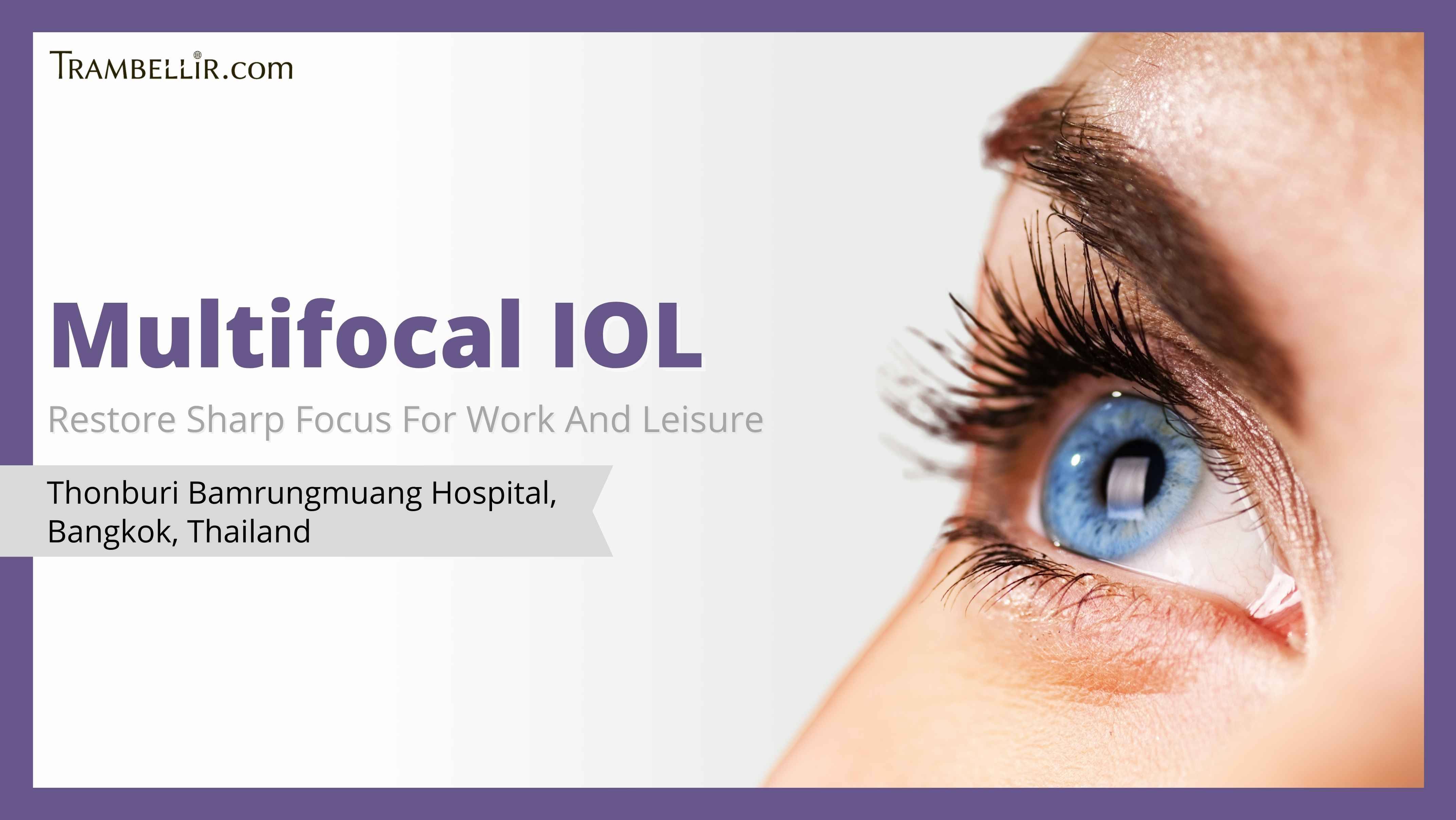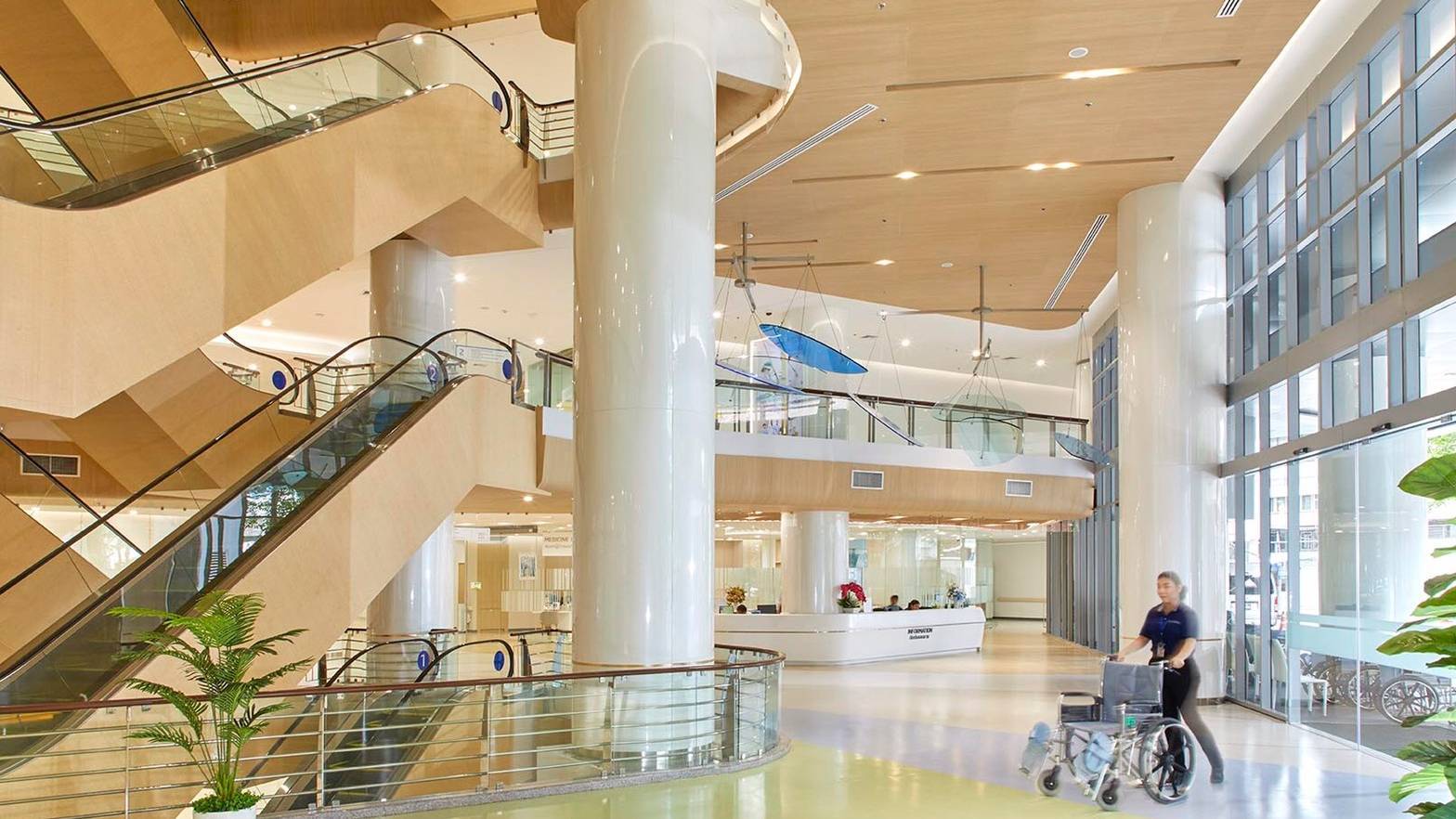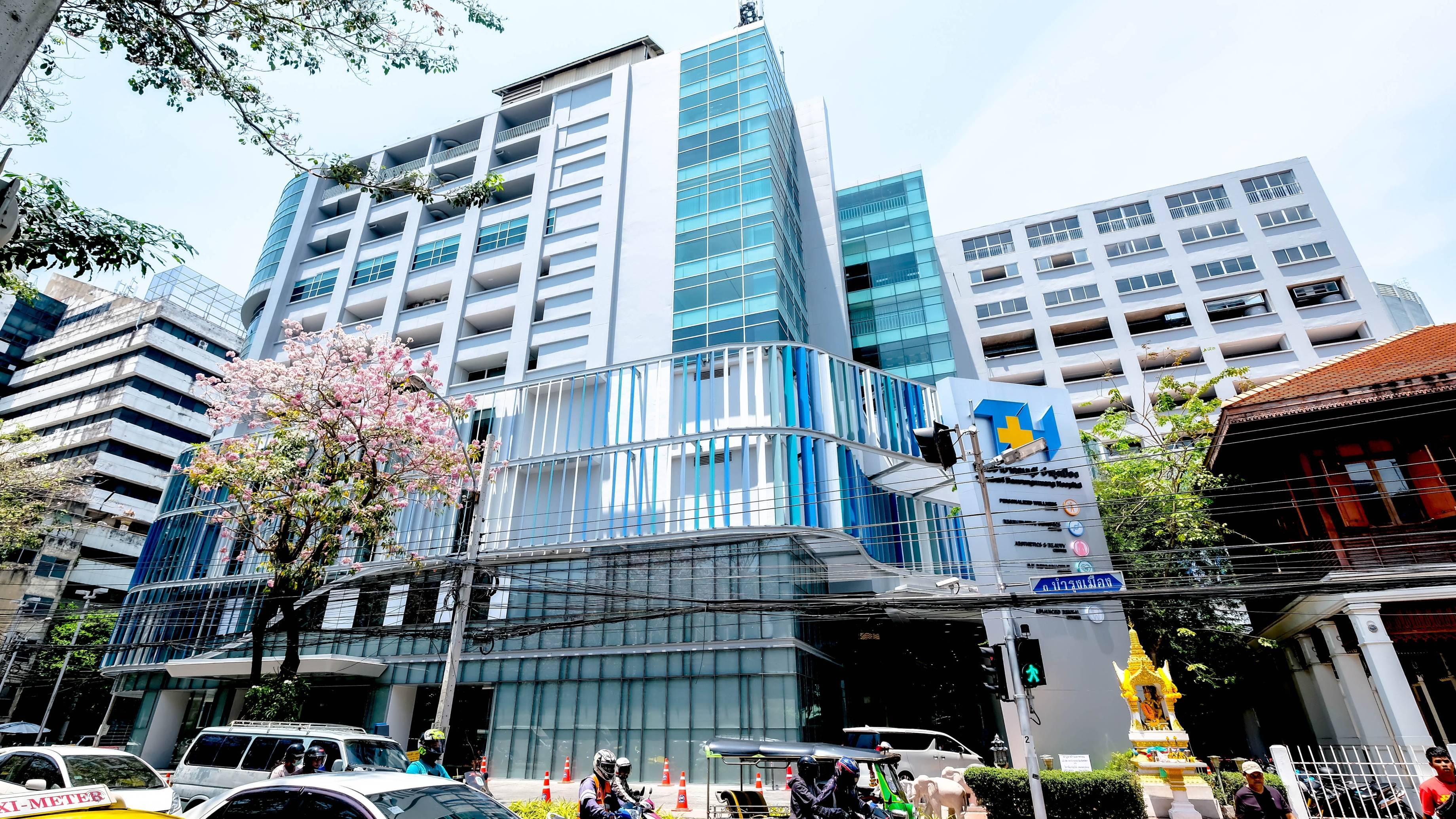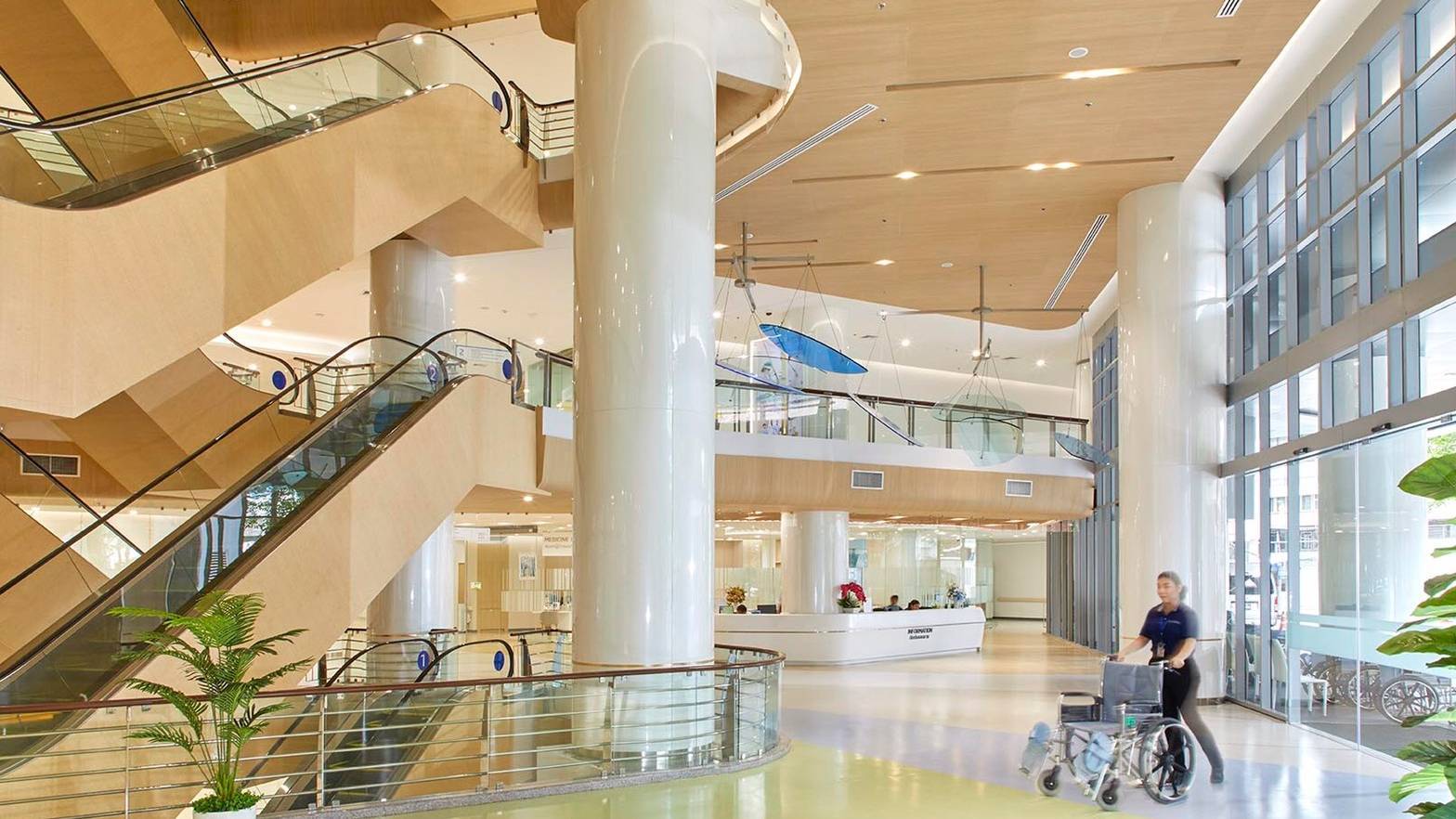It Is Suitable For
· Those in Bangkok looking for ways to have clear vision at multiple distances.
· Those with presbyopia.
· Those with cataracts that blur or cloud vision.
· Those who want to reduce or eliminate the need for reading glasses or bifocals.
· Those who wish to improve their quality of life by restoring functional vision.
What Is Multifocal IOL?
Multifocal Intraocular Lens (IOL) is an advanced type of artificial lens carefully implanted to replace the natural eye lens affected by cataracts or age-related focusing difficulties such as presbyopia. Unlike a conventional monofocal lens that sharpens vision at only one distance, Multifocal IOL is built with optical zones that allow the eye to focus on objects at near, intermediate, and far ranges. This provides a wider scope of clear vision and helps reduce constant dependence on glasses for tasks such as reading, computer use, cooking, or driving.
The design of a Multifocal IOL relies on advanced optical technology. Certain lenses use carefully shaped refractive curves to bend light into multiple focal points, while others use finely detailed diffractive patterns with tiny grooves that divide and guide light more accurately. These designs are developed to provide seamless focus across near, intermediate, and distant vision, helping everyday activities feel clearer and more effortless. At our affiliated hospital, the doctor will recommend the most appropriate Multifocal IOL by assessing lifestyle preferences, occupational needs, and long-term visual expectations.
In addition to replacing a clouded or inflexible lens, a Multifocal IOL also offers several benefits. Clearer vision at multiple ranges can restore confidence in everyday activities, support safer mobility, and reduce the inconvenience of carrying several pairs of glasses. Many patients report an improved quality of life, greater visual freedom, and satisfaction in both social and professional settings.
How It Works
Multifocal IOL begins by a consultation with the doctor at our affiliated hospital, where a full eye examination is performed to assess lens clarity, corneal shape, and overall eye health. During this stage, the doctor also discusses lifestyle needs, daily visual demands, and long-term expectations to ensure the most suitable lens choice. Precise measurements are taken to guide the selection of the multifocal lens design, whether refractive or diffractive, that will provide balanced vision across different distances.
Once preparation is complete, the implantation procedure is carried out. The surgery usually takes about 20 to 30 minutes for each eye and is performed under local anesthesia. The natural lens is gently removed and replaced with Multifocal IOL through a very small incision. The incision is self-sealing in most cases, which allows a quicker recovery and no need for sutures.
After the surgery, initial improvements in vision can usually be noticed within 7 days, although complete visual adjustment may take 4 to 6 weeks. The main benefit is freedom from constant glasses use, with clear vision for near, intermediate, and distance tasks. Downtime is generally short, with light activities resuming quickly, while strenuous exercise, swimming, or exposure to dusty environments should be avoided for at least 2 to 3 weeks. With proper post-operative care and regular follow-up visits, Multifocal IOL provides long-lasting visual clarity and improved quality of life.
Multifocal IOL Procedure
1. Consultation will be conducted with the doctor.
2. Local anesthesia will be applied.
3. A small incision will be made.
4. Cloudy lenses will be broken down and removed.
5. Multifocal Intraocular Lens will be implanted.
6. The incision will be closed naturally.
7. A protective shield will be placed over the eye.
Advantages and Limitations of Multifocal IOL
<Advantages>
· Restores clear vision
· Corrects age-related presbyopia
· Enhances focus at near, intermediate, and far distance
· Reduces visual strains
· Supports healthier visual function
· Protects overall eye health
· Improves contrast and brightness perception
<Limitations>
· Temporary discomfort, mild pain, swelling may occur at least 1 week after surgery
· Temporary light sensitivity may occur 3 to 5 days after surgery
Multifocal IOL Preparation
· Avoid applying any cosmetic products on the eye area 2 to 3 days before surgery
· Avoid taking any blood thinners at least 1 week before surgery
· Eat a light meal 1 to 2 hours before surgery
· Inform doctor for any infections or ongoing medications
Multifocal IOL Post Care
· Avoid doing any strenuous exercise, hot baths, saunas for 2 to 3 weeks after surgery
· Avoid rubbing or pressing on the area for at least 1 to 2 weeks after surgery
· Avoid applying makeup for 5 to 7 days after surgery
· Avoid direct sun exposure and wear sunglasses for 1 week after surgery
· Refrain from exposing the eyes from dust, dirt, and strong wind out doors for 4 to 6 weeks after surgery
FAQ
Q1: How long does Multifocal IOL last?
A1: Multifocal IOL is designed to be permanent and does not wear out or require replacement. Once implanted, Multifocal IOL remains in the eye for life, offering long-term visual clarity.
Q2: Can both eyes receive Multifocal IOL?
A2: Yes, both eyes can be implanted with Multifocal IOL, but 1 at a time. Implanting Multifocal IOL in both eyes often provides the best overall balance in vision, improving depth perception and reducing dependence on spectacles.
Q3: Can Multifocal IOL be implanted even without cataracts?
A3: Yes, Multifocal IOL can be implanted in patients without cataracts who suffer from presbyopia or want to reduce dependence on glasses.
Q4: How long does Multifocal IOL procedure take?
A4: Multifocal procedure takes approximately 20 to 30 minutes for each eye.
Q5: Can Multifocal IOL improve vision for computer use?
A5: Yes, Multifocal IOL provides clarity at intermediate distances, which makes working on a computer, using a tablet, or cooking much more comfortable without glasses.
Clinic Information
[Clinic Name] Thonburi Bamrungmuang Hospital
[Location] Bangkok, Thailand
[Nearest Station/ Nearest Tourist Destination] A 10 mins drive from Hua Lamphong MRT station; 5 mins drive from National Stadium BTS station
[Clinic Opening Time] 24 hrs
| Operation Time |
20 - 30 mins per eye
|
| Recovery Time |
4 - 6 weeks
|
| Number of Postoperative Visit |
1 visit for check up after healing
|
| Hospitalization |
Not required
|
| Limitations |
· Temporary discomfort, mild pain, swelling may occur at least 1 week after surgery
· Temporary light sensitivity may occur 3 to 5 days after surgery
|
| Cancellation Policy |
No charge for cancellations made at least 48 hrs prior appointment date* |
| Location |
Thonburi Bamrungmuang Hospital, Bamrungmuang Rd, Khlong Maha Nak, Pomprapsattruphai, Bangkok, Thailand |
Terms of Service
Trambellir is a health tourism platform and does not in any way provide, promote, or sell any
medication or medical treatment to the Customers.
Customers are advised to contact the healthcare providers directly for any enquiries related to
medical treatments.








